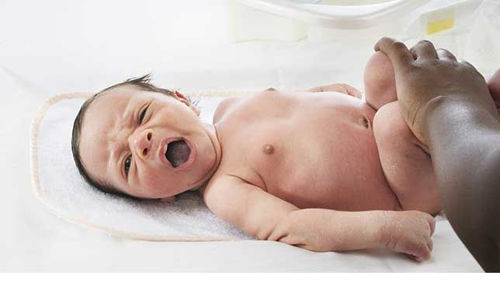Ultraviolet rays of sunlight, if they act on the skin long enough and intensely, can cause sunburn. Local, painful redness of the skin, in which only the upper layer of the skin is affected, is a 1st degree burn. When blisters and open, red, superficial wounds develop, we speak of grade 2 burns. They are accompanied by fever, headache, sweating, may also be vomiting and dangerous: heat strokes. Carry the baby immediately in the shade and place him on a flat surface.
If you suspect a heat stroke, make sure your child sees a doctor as soon as possible!
Does the child need to see a doctor?
If your child develops blisters due to sunburn, take him or her to a doctor immediately.
So the doctor helps
For grade 2 burns, he may prescribe an ointment that inhibits inflammation and drops to relieve pain.
That's how you help the child
& # 8226; In case of 1st and 2nd degree burns, take the child to the shade immediately. Cool the burnt areas with cold water - you can wear a wet T-shirt in case of an emergency.
& # 8226; On reddened spots on the skin, but not on the blisters, apply cold compresses with cottage cheese or yogurt.
& # 8226; The child should drink plenty of moderately salty fluids (1 teaspoon of salt per 1 liter of water).
& # 8226; Prevention: do not leave the child in the sun without a wide-brimmed hat - it is best if he also wears a shirt.
& # 8226; Use quality, unscented sunscreens (protection factor 12 to 20) without preservatives and emulsifiers, because they can cause allergies.
& # 8226; Apply sunscreen half an hour before going out in the sun and several times a day - regularly after each bath.
& # 8226; Start sunbathing slowly: only 10 minutes on the first day. Avoid sunbathing during the midday heat.









